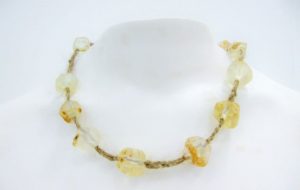 Technology
Technology  Technology
Technology  Humans
Humans 10 Everyday Human Behaviors That Are Actually Survival Instincts
 Animals
Animals 10 Animals That Humiliated and Harmed Historical Leaders
 History
History 10 Most Influential Protests in Modern History
 Creepy
Creepy 10 More Representations of Death from Myth, Legend, and Folktale
 Technology
Technology 10 Scientific Breakthroughs of 2025 That’ll Change Everything
 Our World
Our World 10 Ways Icelandic Culture Makes Other Countries Look Boring
 Misconceptions
Misconceptions 10 Common Misconceptions About the Victorian Era
 Mysteries
Mysteries 10 Strange Unexplained Mysteries of 2025
 Miscellaneous
Miscellaneous 10 of History’s Most Bell-Ringing Finishing Moves
 Technology
Technology Top 10 Everyday Tech Buzzwords That Hide a Darker Past
 Humans
Humans 10 Everyday Human Behaviors That Are Actually Survival Instincts
 Animals
Animals 10 Animals That Humiliated and Harmed Historical Leaders
Who's Behind Listverse?

Jamie Frater
Head Editor
Jamie founded Listverse due to an insatiable desire to share fascinating, obscure, and bizarre facts. He has been a guest speaker on numerous national radio and television stations and is a five time published author.
More About Us History
History 10 Most Influential Protests in Modern History
 Creepy
Creepy 10 More Representations of Death from Myth, Legend, and Folktale
 Technology
Technology 10 Scientific Breakthroughs of 2025 That’ll Change Everything
 Our World
Our World 10 Ways Icelandic Culture Makes Other Countries Look Boring
 Misconceptions
Misconceptions 10 Common Misconceptions About the Victorian Era
 Mysteries
Mysteries 10 Strange Unexplained Mysteries of 2025
 Miscellaneous
Miscellaneous 10 of History’s Most Bell-Ringing Finishing Moves
Ten Bizarre Facts about Earwax
Earwax. How often do we really stop and mull over the stuff that oozes out of our ear canals? For most of us, it builds up over time, and we clean it out without much thought. But the substance—sticky for some, white and flaky for others—is an odd and fascinating thing. For example, it can be used to measure stress levels or learn more about ancient Japanese civilizations.
There are also more disturbing cases involving earwax like the man in Florida who had a hungry cockroach burrow inside him or the historic banquet guests who would deliberately make themselves vomit. Here are ten offbeat facts about the strange sensory secretion.
Related: 10 Facts About Body Hair That Will Make You Sick
10 Whale Stress Levels Peaked during WWII
It wasn’t just us humans that suffered under the brutality of the Second World War. It turns out whales did too. These marine mammals experienced much alarm around the early 1940s, so say researchers from Baylor University in Texas.
How do scientists know all this? By looking at their earwax, of course. The team examined the squelchy stuff from fin, humpback, and blue whales in the Pacific and Atlantic Oceans, with records stretching as far back as 1870.
At stressful periods in history, whales produce the hormone cortisol in greater amounts. The Baylor group found peak cortisol levels corresponded with the outbreak of global war. There were also major stresses in the 1920s, 1930s, and 1960s when whaling was at its height. By the mid-1970s, whaling had essentially died out in the Northern Hemisphere, which is why the earwax records show very little cortisol from this period. But in recent years, levels have started to rise again, which scientists believe may be due to increasing sea temperature.[1]
9 The Cough Reflex When You Poke Things in Your Ears
Ever coughed while clearing out your ears? You’re not alone. The peculiar response is stimulated by the auricular branch of the vagus, also known as Arnold’s or Alderman’s nerve. At historic banquets, aldermen used to gorge until their stomachs were full, then scratch their ears to force themselves to throw up and make room for even more food.
Studies have shown that Arnold’s ear-cough reflex affects around 2% to 4% of people. Those people can sometimes develop chronic coughs due to earwax buildup or hearing aids triggering the nerve.[2]
8 Buildup Can Cause You to Hear Double
I am sure most, if not all, of us are aware of seeing double. But how about hearing double? The audio phenomenon known as diplacusis causes a person to perceive sound differently in each ear. For example, when a sound is made, one ear may hear the actual tone while the other picks up the pitch to be lower or higher. For some, this disconcerting effect wears off over time; for others, it remains permanently.
Diplacusis is caused when hearing loss takes place in only one ear or both ears unevenly. This can come about for various reasons, such as an ear infection or exposure to loud sound. But double hearing is sometimes caused by blockages in the ear, like a clogged sinus or a massive buildup of earwax. Luckily this second type is easier to treat and usually fades away once the obstruction has been cleared out. So remember to keep your ears clean; otherwise, you too may feel the audio unbalance of diplacusis.[3]
7 Ancient Japanese People Likely Had Wet, Orange Earwax
Little is known about the prehistoric people of Japan, but in 2019, DNA evidence helped shed some light on the country’s ancient inhabitants. A tooth uncovered at the Funadomari has taught scientists much about the Jōmon people who once dwelled in that area, including the unexpected nature of their earwax.
Scientists discovered a molar in a woman’s skull believed to have lived around 3,500 to 3,800 years ago. From this tooth alone, researchers in Tokyo were able to extract all her genetic information. This gave them valuable insight into the features of the Jōmon female.
Unlike modern Japanese people, the evidence suggests that Jōmons had dark skin, brown eyes, and frizzy hair. This makes them more akin to natives of Eastern Russia or the Korean Peninsula. The woman also had an impressive knack for digesting high-fat foods and a high tolerance for alcohol.
But the discovery that most took the researchers aback came from her ears. The Tokyo team reckoned that Jōmon people probably had wet, orange-colored earwax. This type of wax is usually found in people of African or European descent, while East Asian earwax is typically white and flaky.[4]
6 Yucca Plants Are Causing Serious Ear Injuries
Houseplants are a lovely addition to any abode, but if you’re not careful, that ornamental yucca could end up deafening you. Strange as it seems, scientists have reported a rise in serious ear injuries caused by the shrub’s sword-shaped leaves. The issue is now widespread enough to warrant an article in the journal Clinical Otolaryngology, with the title of “Garden Terror.”
From 2012 to 2017, at least 28 people suffered damage to their ear canal after being impaled by a yucca leaf. Some were lucky to escape with nothing more than an annoying scratch, but the majority suffered a tympanic membrane perforation (TMP)—aka a ruptured eardrum. This painful membrane fissure often leads to hearing loss, vertigo, and some nasty vomiting. Of the 25 recorded cases of ruptured eardrums, 21 recovered. Sadly, even after surgery, the other four experienced permanent hearing damage.
The ear canal is the region of the ear where wax builds up. As such, perforated ear drums and wax issues often go hand in hand. It’s not just needly yucca leaves, botched earwax removal has been known to cause TMPs too.[5]
5 Cockroach Burrows into Ear in Search of a Snack
Cockroaches will feast on all sorts of odd things—earwax being no exception. The secretion is full of keratin, fatty acids, and dead skin cells, making it a choice snack for a famished little insect. So take care because while you sleep, a cockroach might just end up climbing into your ear and looking for something to munch on.
That is exactly what happened to one man in Tallahassee, Florida. Back in 2018, Blake Collins shared a cockroach-infested flat with his husband. The 25-year-old told reporters they had critters in the mattress, in the sheets, even crawling across light fixtures.
But little could have prepared Mr. Collins for one of the roaches to burrow inside his ear. He described the experience as “like someone was shoving a Q-tip all the way inside my head, and there was nothing I could do to stop it.”
Luckily, doctors were able to kill the roach with lidocaine anesthetic. They also removed the egg sac that it had somehow managed to lay inside Mr. Collins’s ear. As he explained, “I heard it die in my head.” The unlucky Florida resident told reporters that as the insect died, he felt it “go super, super fast, kicking and trying to dig its way out.”[6]
4 The Tinnitus Treatment That Zaps Your Tongue
Tinnitus can be an incredibly difficult condition to treat. The ear-ringing affects around 10% to 15% of the population, often caused by overexposure to loud sounds, ear injuries, and, of course, earwax blockages.
In 2020, a company in Ireland unveiled a new form of treatment that they say can reverse tinnitus for up to a year. Neuromod Devices came up with a device called Lenire that buzzes the mouth to tune out the ceaseless din. During this outlandish procedure, the patient listens to music via Bluetooth headphones while a mouthpiece gently zaps the trigeminal nerve in the tongue. Lenire uses a technique known as bimodal neuromodulation treatment. Essentially, the mild shocks distract the brain, retraining it to mute the tinnitus ringing.
As strange as the treatment may sound, trial data is surprisingly positive. In a trial of 326 people, 86% found their symptoms reduced after 12 weeks of treatment. A year down the line, two-thirds were still feeling the benefits.[7]
3 A New Form of Drug Testing
Is earwax the key to a new form of drug testing? Researchers in Brazil reckon the secretion could provide a more accurate tool in forensic analysis.
Forensic analysts usually test for drugs using blood and urine samples. But some substances have short half-lives, meaning they vanish from the bloodstream too quickly to show up in analysis. Scientists argue that because certain drugs like alcohol, cocaine, and amphetamines are often found in higher concentrations in earwax, perhaps now is the time to rethink the forensic approach to drug testing.
To test the theory, the South American scientists tested 17 people, all of whom used antiepileptic and antipsychotic drugs. Many of the drugs tested showed up in high amounts in the earwax samples. The researchers even detected phenytoin in one subject who hadn’t touched the drug for two months.[8]
2 Device for Measuring Hormone Levels
We’ve already explained how scientists are using earwax to monitor whale stress levels, but the same is true of humans too. Researchers from University College London created a device that speedily measures how much pressure someone is feeling by testing their earwax for cortisol.
The scientists explained how monitoring hormone levels can help make medical diagnoses. For example, the condition Cushing’s syndrome is caused by an overproduction of cortisol, whereas Addison’s disease comes from the body making too little. Excess cortisol can also be an indicator of depression.
“Cortisol sampling is notoriously difficult, as levels of the hormone can fluctuate, so a sample might not be an accurate reflection of a person’s chronic cortisol levels. Moreover, sampling methods themselves can induce stress and influence the results,” said Dr. Andres Herane-Vives, who led the study. “But cortisol levels in earwax appear to be more stable, and with our new device, it’s easy to take a sample and get it tested quickly, cheaply, and effectively.”[9]
1 Jewelry Made of Earwax and Hair

Amanda Cotton is by no means a conventional artist. The British designer has made works using maggots and placenta, but one piece, in particular, stands out for this list: her earwax necklace.
Yes, the artwork really is what it says on the tin. For eight months, Ms. Cotton collected her own earwax and turned it into a slightly stomach-churning pendant. She linked the compressed secretions with a chain of plaited hair. The surreal jewelry was first unveiled in 2012 at a graduate show in Brighton.
According to Ms. Cotton, she chose earwax because it reminds her of amber. She says of the piece, “It’s [sic] aesthetically pleasing manner questions onlookers on their approach to this incredible material.”[10]








